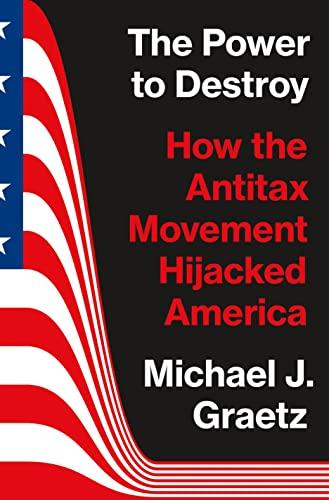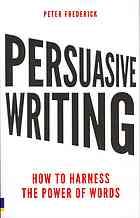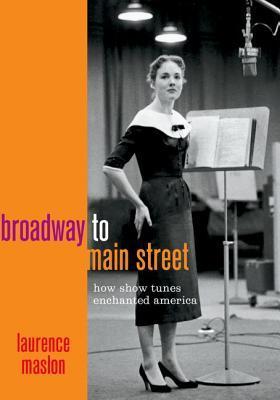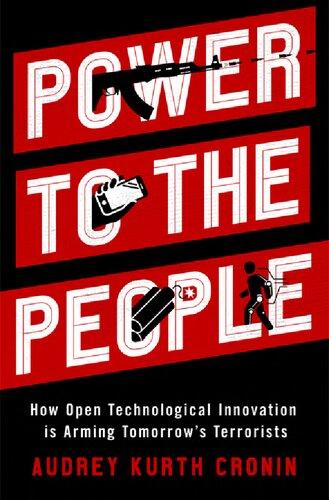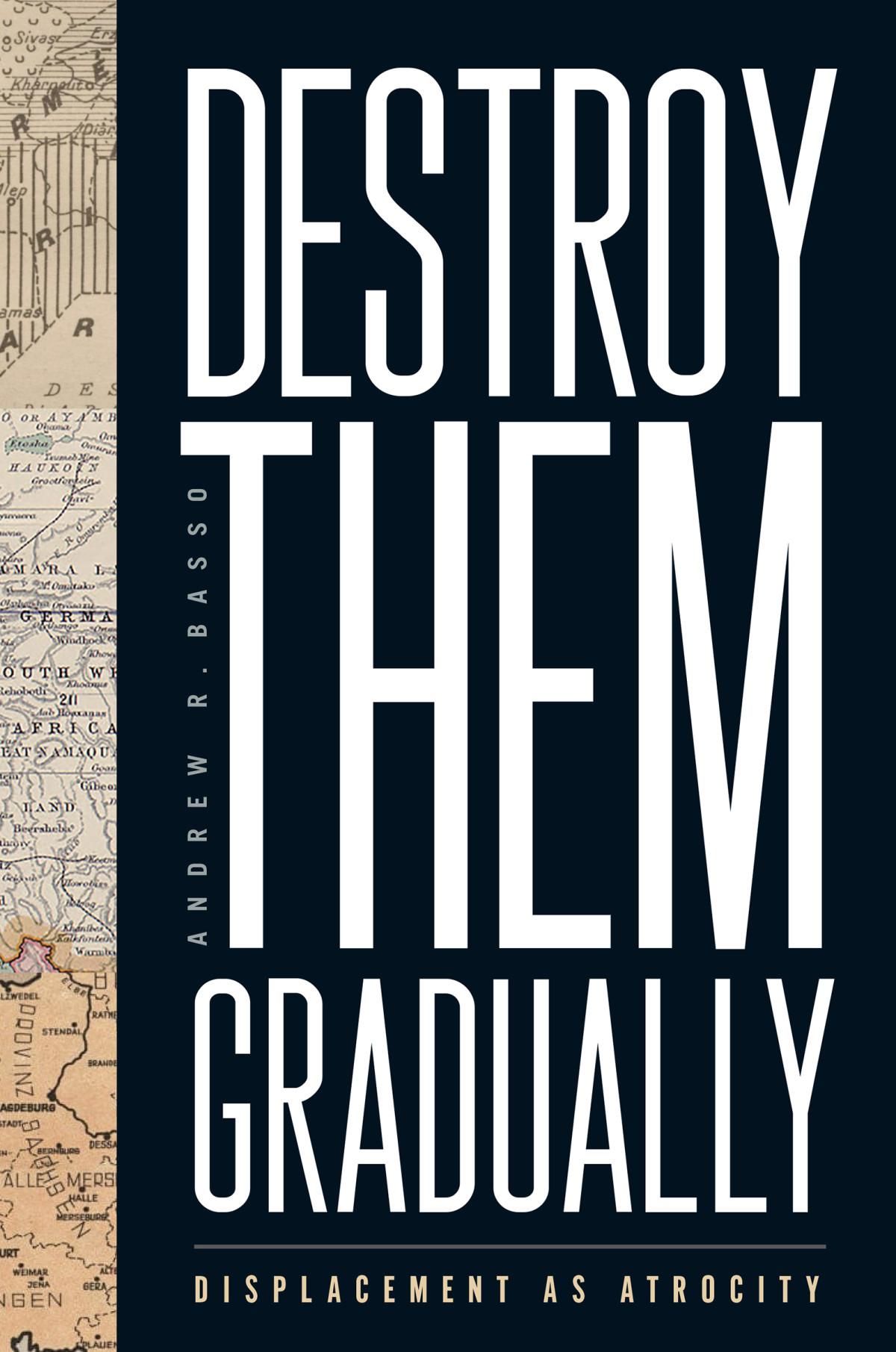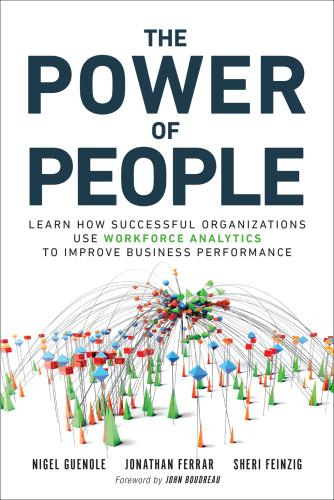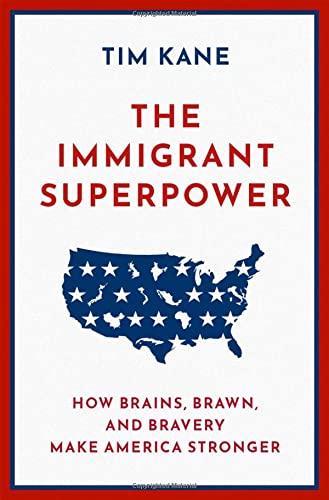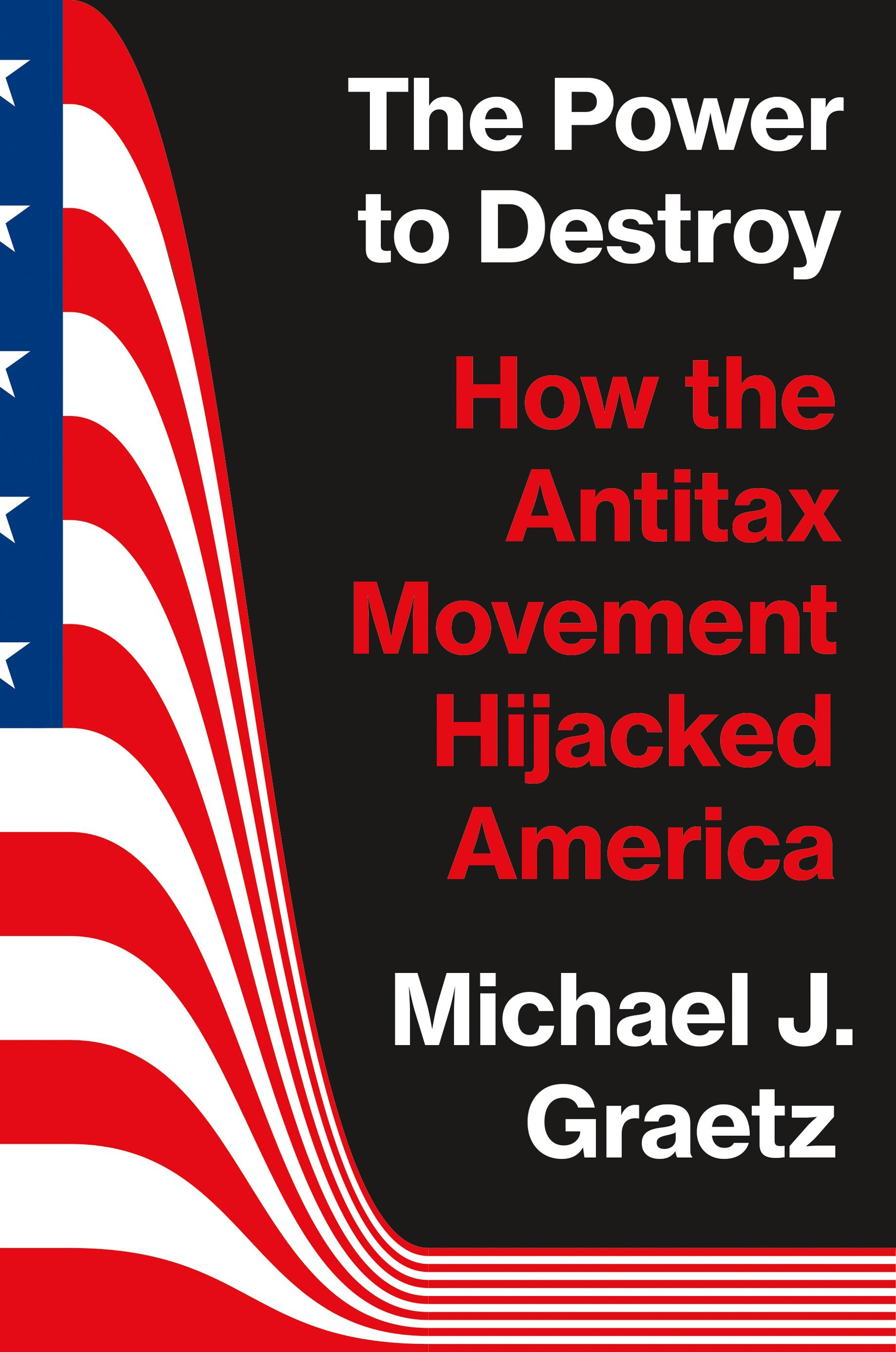Reset from the Right
The year 1978 was a remarkable turning point. Almost unconsciously it seemed the body politic rejected the gestalt that had dominated tax policy.
robert
bartley, editor, wall street journal
In 1897 Charles Dudley Warner, the editor of the Hartford Courant, said, in an observation frequently attributed to Mark Twain, “Everybody talks about the weather, but nobody does anything about it.”1 During the half century from the late 1920s until the late 1970s, much the same could be said about taxes: people across the land complained about taxes but did nothing about it. In 1978, starting in California, people sprang into action—galvanizing an antitax, antigovernment movement that remains remarkably strong more than a generation later. What started as an obsessive fringe movement to cut taxes, bolstered by spurious economic claims and camouflaged racist rhetoric, grew into a power ful force that transformed American politics and undermined the nation’s financial strength.
The modern antitax movement is the most overlooked social and political movement in recent American history. It has impeded the nation’s ability to protect its people from the vicissitudes of life, produced massive public debt, and contributed to the country’s exceptional inequality. Like all social movements, some antitax protagonists have acted out of selfinterest, others out of deep- seated ideological commitments; many have been motivated by both.
American Taxes and Resistance to Them
All governments—including the United States—are financed by some combination of four kinds of taxes: taxes on consumption, income, wages, or wealth. These taxes are sufficiently robust to produce adequate revenues to finance a modern government and may also be described as fair—connected to people’s ability to pay.
Resistance to taxes in the United States has a long pedigree: it is as American as apple pie and fried catfish. 2 Taxes are the primary link between the people and their government: in the United States, more people file tax returns than vote in presidential elections. Antitax efforts are necessarily about the public’s relationship to their government. Debates over “fair” taxation involve disputes over what constitutes a just society. Issues of whom and what to tax and how much necessarily involve fundamental cultural, social, and economic decisions. The nation’s founders understood taxation as a “means for shaping the national economy, bringing foreign nations to fair commercial terms, regulating morals, and realizing . . . social reforms.”3
The Boston Tea Party in 1773 was a response to legislation of the British Parliament providing a tax advantage for tea sold in the American colonies by the British East India Company. It remains the most iconic antitax symbol: ratifying the principle of “no taxation without representation” and helping trigger the American Revolution.4 Attacking the tax collector—always a prominent feature of the antitax movement— also has a long history: Samuel Adams, frequently called the “Father of the American Revolution,” was elected Boston tax collector before the revolution on a platform of not collecting taxes.5
During the nation’s early years, antitax protests were sometimes violent. In 1786 and 1787, after America had secured its independence from Great Britain, armed Massachusetts rebels attempted to overthrow the state government because of its attempts to collect higher taxes than the British had. This uprising, known as Shays’ Rebellion, is frequently credited with inducing the Constitutional Convention to create a stronger national government with the power to tax. In 1791 the Whiskey Rebellion—a violent protest against the first tax levied by the new federal government on a product produced domestically—began in western Pennsylvania and lasted for three years during George Washington’s presidency. After concluding that tariffs on imported goods would not suffice, Alexander Hamilton decided taxing whiskey was essential to pay off the nation’s Revolutionary War debts and to validate the
new federal government’s authority to tax. (The whiskey tax was repealed in 1801 after Thomas Jefferson became president.) In 1799 Pennsylvania Dutch farmers, in what became known as Fries’s Rebellion, began an armed rebellion against a new federal tax on real estate and slaves to help pay for a naval war with France.6 Like the Whiskey Rebellion, this protest was halted by the federal government, costing the Federalists support in Pennsylvania in the 1800 election.
The United States first enacted an income tax because the country needed the money to finance the Civil War after Treasury Secretary Salmon P. Chase told President Lincoln the Union government could not borrow enough money, a doleful truth that eluded the Confederacy until it was too late. After the war, the income tax was allowed to lapse. By 1893 when the federal government again moved to tax income, revenue needs no longer solely justified the tax. An income tax was viewed as necessary for economic justice in an industrializing nation. The 1893 income tax was struck down by the Supreme Court two years later, but in 1913 the nation overcame the difficulty of amending the Constitution to enact the Sixteenth Amendment, enabling the federal government to tax income.7
Before World War I and to a lesser extent after, the United States relied heavily on tariffs, taxes imposed on imported goods. Tariffs typically produce higher prices for imported and domestically produced goods that are subject to them, much like excise or retail sales taxes. After World War II until 2017, the United States (along with much of the rest of the world) decreased and eliminated tariffs to reduce barriers to international trade.
The modern income tax was initially limited to high-income Americans and corporations with the tax’s scope and rates varying depending on the nation’s need for revenues. When our nation faced massive challenges to finance World War II, Congress transformed the income tax from a class tax to one on the masses. Then, for the first time, our nation became full of income taxpayers. In 1939 fewer than four million Americans paid income tax, but by 1945 that number had increased tenfold to more than forty million people. By the time World War II ended, individual income taxes accounted for 40 percent of federal revenues, and corporate income taxes contributed another third. In the decades since, the individual income tax has remained the centerpiece of the federal tax system.
In 2021 more than half of all U.S. federal revenues were supplied by income taxes on individuals. About 9 percent came from the corporate income tax, which typically applies only to publicly traded businesses. (Unlike most
countries, about half of U.S. business income is earned by partnerships and privately held companies, the income of which is taxed only to its owners.)
Taxes on wages and earnings from self-employment finance Social Security, Medicare’s hospital insurance, and unemployment insurance and accounted for another 31 percent. Together, these payroll and income taxes comprised more than 90 percent of the total. Excise taxes on the consumption of specified goods, such as fuels, alcohol, and tobacco, added another 2 percent, as did tariffs on imported goods. The estate and gift taxes—the only federal taxes on wealth, imposed when very rich people transfer their wealth by gift or at death—supplied only a fraction of 1 percent of federal receipts.8
Consumption taxes, such as retail sales taxes, are prevalent in states and localities, which also impose property taxes on real estate, automobiles, and sometimes securities. The United States relies much less heavily on consumption taxes than does the rest of the world. About 170 countries worldwide impose national value-added taxes (sometimes called goods and services taxes) on purchases of goods and services. These taxes are a type of sales tax with withholding required from producers and wholesalers so that collection does not depend solely on compliance by retailers. An income tax includes income whether saved or consumed, while a consumption tax exempts income people save.
Income taxes are typically imposed with progressive rates, which means the tax rate goes up as income increases. Consumption and wage taxes are typically levied at flat rates without any personal exemptions or thresholds, and are often regressive, which means they impose greater burdens on the poor than the rich, but flat-rate sales and value-added taxes can be made proportional to income. For a long time, Americans viewed the income tax as the fairest tax, but beginning in the 1970s, polling showed the public considered income taxes to be the least fair and approval of sales taxes rose.9
Distrust of Government
When the modern antitax movement began in 1978 with a property tax limitation referendum in California, economic and social conditions were ripe for a populist antitax movement. The economy was stagnant, inflation was raging, and American society was ripping apart. As the historian Dominic Sandbrook wrote, the “single most compelling theme of the 1970s” was the “notion of the virtuous citizen locked in battle against big government, big business, and a decadent elite.”10
From the end of World War II until the mid-1970s, fortune smiled on the United States. The U.S. economy expanded for nearly a generation—fulfilling Amer ica’s promise as a land of exceptional opportunity. For young (white) men back from the war, the government offered a free college education. Even unskilled workers without a college degree typically had good jobs that could last a lifetime or started small businesses with excellent chances of success given the coming years of robust, broadly distributed economic growth. One salary could finance a family’s living expenses and frequently the purchase of a federally subsidized home.
Public and private institutions were strong. Public education provided a ladder up for white children nationwide. Unions represented more than a third of all private- sector workers—negotiating good wage and benefit packages and providing middle-class workers and their families an effective voice in federal and state legislatures. Churches and synagogues, along with other religious and secular civic organizations, offered substantial social supports. Having defeated Hitler in the war and enjoying the fruits of robust economic growth, Americans generally had confidence in their government and believed their children’s lives would be better than their own.
This happy picture, of course, was dominated by the color white. In the South, Jim Crow ruled. Black Americans were ghettoized in American cities everywhere. Public schools rarely created economic opportunities for Black children.
Together, the civil rights revolution and the women’s movement challenged long-standing social and political arrangements. Efforts by Black families to desegregate public schools met resistance across the country. White men were threatened by new competition for jobs from minority and women workers. Long- standing family arrangements suddenly became contested. Historian Ruth Rosen aptly titled her modern history of the women’s movement The World Split Open. 11 President Lyndon Johnson asserted in his June 1965 commencement address at the historically Black Howard University, “You do not take a person who, for years, has been hobbled by chains and liberate him, bring him up to the starting line of a race and then say, ‘you are free to compete with all the others,’ and still justly believe that you have been completely fair,” indicating his support for affirmative action. 12 While both movements achieved impor tant progress, turmoil became palpable in the 1960s, and confidence in government eroded during the 1970s.
The 1970s was a hinge decade, a time of dramatic change. The era of individualism and isolation described by Harvard political scientist Robert
Putnam in his 2000 book Bowling Alone emerged in the 1970s.13 The seeds of disquiet and distrust of government and other institutions planted in the 1960s blossomed in the 1970s, setting the agenda for much of what transpired over the rest of the twentieth century and well into the twenty-first—an effect well documented once the decade became a fit subject for historians.14 The 1970s was a time of divisiveness and upheaval, a period of cultural clashes, racial division, and economic distress. The 1970s began, as historian Daniel T. Rodgers put it, a long “age of fracture” in America.15
Epic government failures, such as Watergate (along with corruption by other government officials), the disastrous Vietnam War, and illegal domestic intelligence operations by the CIA and FBI against antiwar protestors and other dissident groups, along with more common deficiencies, fueled disdain for and distrust of government that had been suppressed by more than two decades of postwar prosperity and U.S. global dominance.16 Antigovernment skepticism pervaded the nation.
As World War II became more distant and the Vietnam War more costly and less popular, antitax sentiment grew. Tax increases to support widely accepted wars have long been supported by the American people, but public support for tax increases to fund controversial military ventures abroad or increases in domestic spending has been more difficult to muster.17
After Richard Nixon resigned the presidency in disgrace, Gerald Ford, a long-time Michigan congressman who replaced Spiro Agnew as vice president after Agnew pled nolo contendere to a felony charge of tax evasion and resigned, became the first vice president to become president without having been elected. On September 8, 1974, President Ford issued an unpopular, controversial “full, free and absolute” pardon of Nixon for any crimes he committed while in office.
Two months later, on November 5, 1974, Democrats won 49 seats in the House of Representatives, producing more than a two- thirds majority. Democrats also gained 4 Senate seats, giving them a 60-vote majority, and 4 governorships. Democrats mistook these victories as public endorsement of liberal government policies rather than the temporary repudiation of Republicans they were. Many Democrats failed to recognize that their New Deal coalition of blue- collar workers, racial minorities, white southerners, and urban intellectuals was disintegrating.
In his State of the Union Address on January 19, 1976, the beginning of the nation’s bicentennial year, President Ford said, “We must introduce a new balance in the relationship between the individual and the government—a
balance that favors greater individual freedom and self-reliance. . . . The Government must stop spending so much and stop borrowing so much of our money. More money must remain in private hands where it will do the most good. To hold down the cost of living, we must hold down the cost of government.” He also called for about $10 billion in tax cuts in an effort to stimulate the economy.18 Ford presided over a weak economy that had not fully recovered by January 1977, when Jimmy Car ter, a former Georgia governor and “born-again” Christian, moved into the White House.
Stagflation
From 1973 through 1975, the United States experienced its most severe recession since the end of World War II. Unlike previous recessions, this downturn was accompanied by double-digit inflation that did not abate until the 1980s. The toxic mix of unemployment and inflation, known as “stagflation,” was a major catalyst for the antitax movement and inculcated widespread beliefs that government no longer worked.
In his most feckless effort to battle inflation, President Ford urged Americans to wear “WIN” buttons, standing for “Whip Inflation Now.” Alan Greenspan, Ford’s chairman of the Council of Economic Advisers, later described this idea as “unbelievably stupid.”19 President Car ter fared no better in his efforts to control inflation.
Making matters worse, productivity growth—the most impor tant contributor to wage growth and rising standards of living, which had been strong for nearly thirty years following World War II—began to decline and disappeared for many workers by the end of the 1970s. Beliefs that the nation’s economy would continue to expand robustly, producing many winners and few losers, vanished simultaneously.20
The unprecedented stagflation of the 1970s energized the antitax movement. Rising prices took more out of families’ pockets, just as wages were flattening and job security disappearing. Income and property taxes made matters worse. As housing prices rose, so did property taxes, increasing costs for both homeowners and renters without providing corresponding benefits. Progressive income taxes increased as inflation pushed people into higher tax brackets even though their wages purchased fewer goods and services. Fixed dollar allowances for standard deductions and personal exemptions became less valuable as the dollar’s purchasing power declined. Inflation also overtaxes investment income when it measures current year’s income by subtracting historical costs from
current receipts, such as with capital gains. Inflation makes people appear richer to property and income taxes than they actually are.
In 1980 MIT economist Lester Thurow published a gloomy bestseller, The Zero-Sum Society, relating the nation’s economic decline during the 1970s. Thurow emphasized the slippage in U.S. standards of living relative to the rest of the world and observed how such a decline engendered dissatisfaction with government. He rejected the “hard-core conservative solution” of deregulation, cuts in “social expenditures,” and tax cuts for “those who save, the rich.” Any solution to the nation’s economic ills, he wrote, “requires that some large group . . . be willing to tolerate a large reduction in their real standard of living.” The United States, Thurow contended, had entered a “zero- sum game,” where the stakes are over the distribution of costs and benefits, and each group wants government to protect it from losses and push costs onto others.21
The time was ripe for an antitax movement. Economic challenges and insecurities, however, were not the only disruptions confronting the United States. Social and cultural turmoil also helped incite antitax fervor. Contrary to common views, taxation is not solely about economics: cultural values are also at stake. In the 1970s, racial conflict was manifest.
An American Dilemma
In 1938 Swedish Nobel Laureate in economics Gunnar Myrdal undertook a comprehensive study of social and economic problems of African Americans in the United States, famously leading him to describe race relations as “An American Dilemma.”22 Over nearly 1,500 pages Myrdal and his colleagues detailed “an ever-raging conflict” between the “American Creed” of “national and Christian precepts”—including belief that all people are created equal and a commitment to equality of opportunity—and personal and local economic and social interests limiting the education of Black children and job opportunities of Black workers, a conflict that persists.23 Racial divisions played an impor tant role in advancing the modern antitax movement. This was not new.
The Constitution’s constraints on federal taxation were shaped in part by political compromises over how slaves should be counted in determining the size of the population for representation in Congress. The absence of federal taxing power under the Articles of Confederation, which preceded the Constitutional Convention, rendered the national government helpless when the states ignored the Continental Congress’s requests for revenue.24 To correct that shortcoming, the Constitution grants Congress the power “to lay and
collect Taxes, Duties, Imposts and Excises” so long as all “Duties, Imposts and Excises shall be uniform throughout the United States.”25 The Constitution also requires any “Capitation, or other direct Tax” to be apportioned among the states based on population.26 The phrase “other direct tax” is not defined in the Constitution but clearly includes taxes on land.27 Slaveholding and racial prejudice were impor tant components of arguments on behalf of strong “states’ rights” and a weak national government. The limitation on direct taxes was part of the Constitution’s original three-fifths compromise over slavery, which determined how slaves should be counted in apportioning seats in the House of Representatives and how capitation or other direct taxes were to be distributed among the states.28
After the Civil War, rising public expenditures in the South by new biracial governments responding to the expansion in the number of free citizens demanding public services, such as public education, hospitals, railroad construction, and law enforcement, required rising taxes to finance substantial growth in the costs of government. The increasing tax burdens, in turn, inflamed white opposition, exacerbated by falling property values, especially when they weakened plantations and promoted Black owner ship. Rising taxes, especially property taxes, became a rallying cry for Reconstruction’s opponents.29
Beginning in the 1890s, poll taxes were used to keep African Americans from voting. Some poor whites were exempted from these taxes if they had an ancestor who voted before the Civil War. Not until 1964 did the TwentyFourth Amendment to the Constitution prohibit poll taxes for federal elections. In 1966 the Supreme Court struck down the remaining poll taxes used by some southern states for state elections.30 Jim Crow and ongoing racial animus also elicited calls for strong states’ rights and a weak national government. Racial conflicts have long played a central role in American tax politics and policy.
Support for taxes to pay for social insurance, including to alleviate poverty, is lower when nations are more racially heterogeneous. Racial animosity makes paying for redistribution to the poor, who are disproportionately Black in the United States, objectionable for many voters.31 Beginning in the mid1960s, the U.S. population became even more heterogeneous due to changes in immigration policies. By the 1970s conflicts over race were conspicuous.
In 1954, in Brown v. Board of Education, the Supreme Court issued perhaps its most impor tant decision of the twentieth century—requiring desegregation of public schools in America. Federal appellate judge J. Harvie Wilkinson
captured its momentousness, writing, “Its greatness lay in the enormity of injustice it condemned, in the entrenched sentiment it challenged, in the immensity of how it both created and overthrew.”32 But the Court underestimated the intransigence of school segregation.
It took until May 1968, fourteen years after the Brown decision and a month after Martin Luther King’s assassination, before the Court ruled delays in desegregating schools were “no longer tolerable.”33 Three years later, the Court approved busing students as the main method for integrating schools.34 Public opposition to busing for desegregation intensified, producing violent clashes in cities across America and exacerbating anger of working-class whites toward poor Blacks. The transformation of the composition of public schools fueled antipathy to property taxes, the main source for financing public schools, and for income taxes paying for other government expenditures, especially welfare.
Concurrently, the Immigration and Naturalization Act of 1965 added fuel to the anti-property-tax and anti-income-tax fires by transforming immigration into the United States. From the 1920s until 1965, the United States based immigration quotas on national origin, favoring immigrants from northern and western Europe. The 1965 legislation made unification of families an immigration priority. Mas sachusetts senator Edward Kennedy, a strong supporter of the changes, assured his Senate colleagues that immigration would remain “substantially the same” and the “ethnic mix of this country will not be upset.”35 But that did not happen.
In the 1950s more than 70 percent of U.S. immigrants came from Canada and Europe, but by the 1980s immigration from these regions had dropped to 11 percent. More than 85 percent came from Latin Amer ica, the Caribbean, and Asia. By the late 1970s, particularly in southwestern states, Latino children of immigrants were flooding into public schools.36 The new immigration law changed the composition of public schools and the workforce, fomenting antiimmigrant, antigovernment, and antitax attitudes that profoundly affected the nation’s tax policies and politics.37
Simultaneously, efforts by colleges and universities to admit African Americans and other minority students fomented further discord, intensifying antigovernment sentiments. Affirmative action in admissions by colleges and universities and by employers—initially for African Americans and expanded in the 1970s to include Native Americans, Puerto Ricans, Mexican Americans, and some Asian Americans—splintered the nation. Many white Americans came to believe that others were “cutting in line” and blamed the
government.38 They did not want to pay taxes to finance expanding public benefits for Black or Latino people or the salaries of government workers distributing them.
Government Spending on the Poor
President Lyndon Johnson pushed the 1964 Civil Rights Act and the 1965 Immigration Act through Congress. In Johnson’s “war on poverty” and “Great Society” programs, Congress during the 1960s also greatly expanded government spending on the poor and elderly, through Medicaid, Medicare, food stamps, housing, education, and welfare. This induced backlash from middleclass whites who believed most of the money was going to poor urban African Americans and Latinos. Although the majority of spending on welfare, food stamps, and subsidized housing assistance went to whites, these minorities, whose median family income was less than 60 percent that of whites and were disparately poor and unemployed, received a disproportionate share of these benefits.39 Resentment over paying taxes to support growing transfers to the poor grew as inflation eroded paychecks’ values and the economy struggled during the 1970s.
In his 1976 presidential campaign, Ronald Reagan famously complained at nearly every stop of a “welfare queen” with “80 names, 30 addresses, and 12 Social Security cards” who drove a Cadillac and was collecting “veterans’ benefits on four nonexistent deceased husbands,” along with Social Security, Medicaid, food stamps, and welfare “under each of her names.” Reagan said, “Her tax-free cash income alone is over $150,000.” He continued speaking about this woman during the next four years in his popular radio shows and in his successful 1980 campaign for president.40 Reagan never mentioned the recipient’s race, but his diatribes intensified anti-poor, antigovernment, and anti-Black sentiment, reinforcing widespread views that government spending on the poor was riddled with fraud and abuse. No one had volunteered to pay higher taxes to support crooked “welfare queens.”
Few foresaw the political toxicity of the combination of a massive increase in Latino immigration and the expansion of civil rights for African Americans. One who did was Kevin Phillips, a young, controversial, Republican strategist. In his 1969 book, The Emerging Republican Majority, Phillips predicted much of what happened. “All the talk about Republicans making inroads into the Negro vote is persiflage,” Phillips said. “The more Negroes who register as Democrats in the South, the sooner the Negrophobe whites will quit the
Democrats and become Republicans. That’s where the voters are.” Phillips concluded, “for a long time, the liberal-conservative split was on economic issues. That favored the Democrats until the focus shifted from programs which taxed the few for the many to things like ‘welfare’ that taxed the many for the few.”41
In a 1981 interview with Alexander Lamis, a political scientist from Case Western Reserve University, Lee Atwater, a notoriously brutal Republican political strategist from South Carolina working in Reagan’s White House, dispelled any doubts about the relationship of the antitax movement to racial resentment. Here’s what Atwater said:
You start out in 1954 by saying [the n-word three times]. By 1968 you can’t say [the n-word] so you say stuff like forced busing, states’ rights, and all that stuff and you’re getting so abstract. Now, you’re talking about cutting taxes and all these things you’re talking about are totally economic things and a byproduct of them is blacks get hurt worse than whites . . . “we want to cut this,” is much more abstract than even the busing thing, and a hell of a lot more abstract than “[the n-word twice].”42
Social Upheaval
Racial resentment was not the only division among Americans in the late 1970s. Books and movies that would have been banned as obscene became commonplace. Attitudes and arrangements concerning sex were changing; by the late 1970s so many unmarried couples were living together that the Census Bureau coined the designation “POSSLQ” for persons of opposite sex sharing living quarters.43 Efforts to secure rights for same-sex couples moved into the mainstream. Religious conservatives and their allies saw their “family values” being threatened. Each of these generated antigovernment political engagement from the right.
The women’s movement produced distinct enmity toward the income tax. Although the Equal Rights Amendment (ERA) never made it into the Constitution, the 1964 Civil Rights Act prohibited employment discrimination against women, and during the 1970s the Supreme Court extended constitutional rights to women in a series of decisions that some legal scholars called a “de facto ERA.”44
The income tax has long struggled with how to tax married couples. From its inception in 1913 until World War II, when the tax was transformed from a
tax on the rich into a tax on the masses, income tax turned on each individual’s income without regard to marital status. Because of the progressive rate schedule, this meant married couples with the same income would often pay very different taxes—more if most of the income belonged to one spouse, as was most often the case, less whenever the spouses’ incomes were more equal.
In 1948 Congress adopted joint returns, which allowed married couples to treat their separate incomes as if equal and pay twice the tax that a single person would pay on one-half the couples’ total income. This is the most advantageous division of income with progressive rates, and it provided great benefits to married couples. But it meant two single people might pay much greater taxes than a married couple with the same income. In the late 1960s, Vivien Kellems, an unmarried, successful Connecticut businesswoman, inspired thousands of Americans to mail teabags to their representatives in Congress to protest what she regarded as the excessive taxation of single people—and remind senators and congressmen of the Boston Tea Party.
In 1969 Congress narrowed the gap for singles but in the process created “marriage penalties” for married couples earning roughly equal incomes.45 This prompted some couples to postpone marrying and impelled some married couples to divorce to save income taxes.46 In the early 1970s, when marriage penalties first occurred, they happened infrequently, but as women’s employment opportunities expanded and married couples with more equal incomes became common, the number of married couples facing income tax penalties grew. Between 1981 and 2017, Congress frequently changed the income tax treatment of married couples, often endeavoring to reduce penalties on marrying.
Single people and married couples who suffered tax disadvantages were frequently angry about their treatment under progressive income taxes. After singles got relief from Congress, one married couple divorced during Caribbean vacations each December in the late 1970s and remarried the beginning of the next year to avoid the income tax marriage penalties. The Washington Post called them “contemporary American heroes.” In 1980 one member of the couple told a congressional tax committee, “In America today the fastest ways to become a national hero are to hit a home run in the World Series or to fight the IRS.”47
Additionally, when not permitted to marry, wealthy same-sex couples faced substantially larger estate taxes than married couples. In 2015 the Supreme Court, in a challenge to the estate tax disadvantage, concluded that prohibiting same-sex marriages was unconstitutional.48
The tax law is laden with fundamental cultural, social, economic, and political judgments. For example, the income tax favors homeowners over renters, promotes charitable gifts over family transfers, and provides substantial benefits for savings for higher education or retirement. The tax also advantages certain forms of business organizations over others and frequently rewards specified investments, such as for real estate. Individual income tax rates are lower for capital gains and dividends than for wages. Alcohol excise taxes favor wine drinkers over beer drinkers, and both over people who sip whiskey. These political choices please some people and foment antitax attitudes in others.
Clashing Interests and Ideologies
For the antitax movement to succeed, public support would not suffice. Although some states allow referendums, changing the tax law usually requires mustering a legislative majority and securing support from the president or relevant governor.
In his 1927 presidential address to the American Economic Association, the economist Thomas Sewall Adams, who served as the Treasury Department’s principal advisor on tax policy and its spokesman before Congress on tax legislation from 1917 until 1923, said, “Modern taxation or tax-making . . . is a group contest in which power ful interests vigorously endeavor to rid themselves of present or proposed tax burdens. It is . . . a hard game in which he who trusts wholly to economics, reason, and justice, will in the end retire beaten and disillusioned.”49 His description remains apt a century later.
Achieving legislative success is not an evenhanded exercise.50 Money to organize meetings, produce favorable polls, generate supporting research by friendly experts, and contribute to political campaigns is more readily available to those who want to reduce their taxes than it is to their opponents. Politicians are more responsive to their wealthy constituents.51 Constitutional decisions treat money in politics as equivalent to speech and protected under the First Amendment even when political contributions create the potential for corruption.52 A constitutional amendment restricting campaign contributions and spending, however, would not eliminate the advantage of monied interests in legislatures: lobbying, creating data and arguments, publicizing them, and presenting them to legislators will always be constitutionally protected speech. Unsurprisingly, the hallways outside the tax-writing committees’ rooms became known as “Gucci Gulch.”53
The decline of private- sector labor unions also shifted political power in federal and state legislatures toward high-income contributors and business owners and away from middle-class workers—who have never found a substitute to argue effectively for their economic interests.
During the 1970s, businesses became more active, better coordinated, more powerful, and more effective at mobilizing support for their legislative agendas. Business political action committees (PACs) began to greatly increase their contributions to congressional candidates. 54 In 1974, large businesses organized the Business Roundtable, an organization of CEOs of about two hundred of the largest U.S. businesses, enhancing their ability to coordinate access to Congress. The National Federation of Independent Businesses (NFIB), founded in 1943 as the legislative advocate for small businesses, became one of Washington’s most powerful lobbying groups. Like the Chamber of Commerce and the National Association of Manufacturers, it is able to generate thousands of phone calls and emails to members of Congress overnight.
In the tax arena, businesses typically lobby for rate cuts or tax breaks for par ticular industries. In a 2013 analysis of the long decline in the social responsibility of corporate leaders, University of Michigan sociologist Mark Mizruchi wrote that the “corporate elite” contributed “to an extremism in politics that the country has not seen in a century” and “retreated into narrow self-interest.”55
Impor tant as they are, arguments based solely on self-interest often fail in distributional politics. Moral and ideological commitments play an essential role in motivating legislators and holding coalitions together. As the Washington tax lawyer Louis Eisenstein wrote in The Ideologies of Taxation, advocates for tax changes need to “convey a vital sense of some immutable principle that rises majestically above partisan preferences.”56
In The Great Tax Wars, the journalist Steven Weisman describes the struggles leading up to the 1913 constitutional amendment permitting income taxation as a battle between proponents of “justice” on one side and “virtue” on the other, with advocates for the former insisting “it is fair for society to tax income at graduated rates, according to ability to pay, because of a need to establish some level of social equity and to curb the power of great wealth over government.” Champions on the other side countered that allowing citizens to keep the wealth they earned is vital to the spirit of free enterprise. Income tax opponents insisted that “taxing wealth wrecks the incentives that have fueled the engine of American prosperity.”57 This debate has never ceased,
although the two sides revised their language, typically by substituting “fairness” for “justice” and “economic efficiency” and “economic growth” for “virtue.”
One common thread among many antitax elites is their admiration for Ayn Rand—and in the case of the influential economist Alan Greenspan, a close friendship with her. Her widely read novels, The Fountainhead (1943) and Atlas Shrugged (1957), are paeans to individualism and self-interest; celebrations of capitalism, especially entrepreneurs; and portraits of government as inevitably destructive of individual initiative and freedom. Rand’s ideas inspired “an ideological explosion on the right” and greatly influenced numerous powerful Republican conservatives. As her biographer, the historian Jennifer Burns, observed, “for over half a century Rand has been the ultimate gateway drug to life on the right.”58 Her novels have sold more than thirty million copies; thirty years after her death they continued to sell a million or more annually.
The Harvard political philosopher Robert Nozick reached fewer public readers and policymakers, but he was widely read in academic circles and important to some antitax advocates. His 1974 book, Anarchy, State, and Utopia, offered a sophisticated counterargument to his Harvard colleague John Rawls’s momentous A Theory of Justice, published three years earlier.59 Rawls prioritized liberty but argued that inequalities should be permitted only if they benefit the worst off in society. Nozick, a committed antigovernment libertarian, claimed “the minimal state is the most extensive state that can be justified.”60 Nozick’s ideal state is one that protects only against force, theft, and fraud and enforces voluntary contracts. He insisted that taxation is equivalent to slavery, writing that “taxation of earnings from labor is on a par with forced labor.”61 He maintained that taxing a person on their labor income is equivalent to forcing someone to work. Nozick’s arguments are consistent with attacks on progressive taxation as discriminating against the wealthy by the influential Austrian economist Friedrich Hayek, but Nozick goes further, opposing any taxation of labor income. Nozick’s book won the 1975 National Book Award in Philosophy and Religion and was named by the London Times one of “The Hundred Most Influential Books since the Second World War” and one of the fifteen most influential of the 1970s.62
In the legislative process, the philosophical propositions of writers like Rand and Nozick typically are offered as assertions that tax cuts are necessary to advance or preserve freedom, bolstered by claims they will produce desirable economic results and be good for the country. The latter contentions are typically grounded in economic analyses insisting tax reductions will enlarge
the economy, stimulate productive investments, and produce more jobs and higher wages. Economists advancing such claims are frequently from business coalitions, think tanks, or universities.
Policy-oriented research institutions have long played impor tant roles in advancing antitax agendas. Until the 1970s, Washington think tanks mostly leaned left, but beginning in the 1970s, conservatives changed this profile. Between 1976 and 1995, almost twice as many conservative think tanks emerged as liberal ones.63 With a few exceptions, conservative think tanks are better funded than liberal ones—and generally have been more effective in Congress. In 1973 conservative Republicans Paul Weyrich and Edwin Feulner founded the Heritage Foundation with funds from ultraconservative millionaires Richard Mellon Scaife and Joseph Coors. In an understatement, The Economist described Weyrich as “one of the conservative movement’s more vigorous thinkers.” Weyrich was not as modest, insisting, “we are radicals, working to overturn the present power structure of this country.”64 From 1981 when Ronald Reagan became president until 2017 when Donald Trump took office, Heritage was the most impor tant activist right-wing think tank.
In 1977 Kansas billionaire Charles Koch founded and funded the libertarian CATO Institute, led by the former National Libertarian Party chair Edward Crane. While substantially smaller than Heritage, CATO has long been an impor tant tentacle of a group of right-wing organizations constituting what is now frequently called the “Kochtopus.”
Other conservative organizations, such as the American Enterprise Institute, California’s Hoover Institution, and the American Council for Capital Formation, also played large roles in the antitax movement beginning in the late 1970s.
Which Taxes Have Been Targeted?
Virtually any product or transaction can be taxed, and politicians enjoy great discretion over whom and what to tax. The tax law is tortuous in its complexity, and tax-policy debates and changes are often cloaked with misdirection. This allows legislatures to provide special benefits or burdens and produce unfairness and economic waste, all of which may bolster antitax sentiments.
The distribution of income in the United States has grown much more unequal since the 1970s as increasing shares of wages have gone to highly educated and skilled workers at the top. Changes in family composition have also contributed to inequality, as affluent single people have become more
likely to marry one another and single-parent households have grown, especially among parents with only a high school education. Wealth is even more skewed toward the top than income. The wealthiest 10 percent of U.S. households own nearly three-fourths of the nation’s wealth, while the bottom half of the population owns just 1 or 2 percent.65
Antitax advocates have not treated all taxes as equally impor tant to attack. Nor are the gains from winning equivalent. As discussed above, businesses and wealthy individuals enjoy impor tant advantages in the legislative process. This increases the vulnerability of taxes they pay: individual income taxes at the top, the corporate income tax, and taxes on property and wealth have been the most vulnerable antitax targets. Eliminating or greatly reducing the only national tax on wealth, the estate and gift tax, has been a conspicuous goal of antitax advocates.
The first major success of the modern antitax movement occurred in June 1978 with a referendum to cut property taxes and limit their future growth. The movement soon enjoyed additional successes in other states, then began to reduce federal income and estate taxes. Opposition to any and all tax increases and ongoing support of tax cuts became the indispensable cornerstone of the Republican Party’s economic policy—no matter the economic circumstances or the government’s financial condition. Democrats began collaborating with the antitax movement, then fundamentally surrendered. The story of how that happened begins in California.
